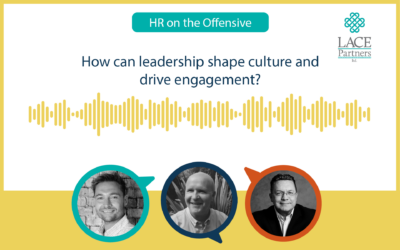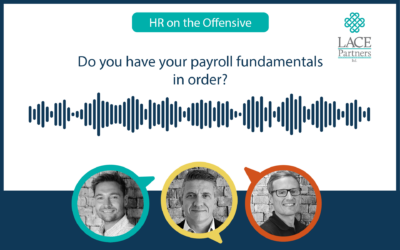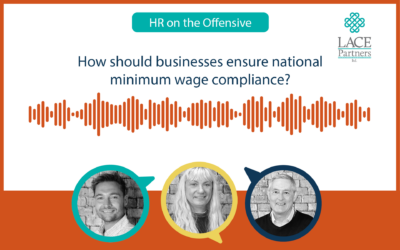Encouraging people to return to work post-pandemic can be a delicate balancing act for HR Directors. There have been numerous headlines recently about global tech companies like Apple, Google, and Facebook pushing for more office working. So are we now seeing a large scale migration back to the workplace, led by the big tech brands? And, if so, how should businesses and people managers strike the balance to manage the transition smoothly? Co-founder Cathy gives a LACE perspective on these questions.
The big return?
Much is made of the innovative people practices of US technology giants like Google. They were one of the first to encourage people to work from home during the pandemic. When we hear they are asking workers to come back with a requirement to formally apply to work from home, and salaries being adjusted depending on place of work, it’s not an unreasonable jump to conclude the big return is underway. On a personal level, I haven’t seen the transport in London this busy since pre-pandemic levels, so it certainly feels like a significant shift is happening.
From talking to our HR Director clients, most businesses are taking a more balanced, voluntary approach compared to Google. The pandemic has shone a light on the need to understand that every person, team, industry and business has different perspectives and challenges. There is general acceptance that hybrid working is here to stay but that a balance must be achieved based on what’s right for the business and the individual.
We all understand the challenges about returning to the workplace on an individual level. Health and wellbeing considerations are top of the list, but other factors such as caring for dependents (not to mention new lockdown pets!), commuting time and costs are also important. Whilst some are weighing up these considerations, others will be delighted to have the opportunity to get back to a formal place of work. For example, those who are in shared accommodation with limited, if any, workspace other than their bedrooms, are no doubt keen to return. People who have taken on new jobs during lockdown will want to spend time with their new colleagues in person, those earlier in their careers will want to be around people they can learn from, and those in creative and problem-solving roles will want to get back to face to face collaboration.
We shouldn’t forget that, for many workers, home working has not been an option. Businesses with workforces who must be at the place of work to do their jobs (such as manufacturing, travel, retail) have perhaps a more complex challenge. They need to guard against the risk of creating a two-tiered ‘them and us’ environment with office-based workers (support functions, HQ etc) benefiting from the perceived luxury of home working, whilst most of the business has no choice but to be in the workplace. In those circumstances, it’s easy to understand why business leaders would want to see their office workers back in the workplace as soon as possible.
When managing the transition, the key word is flexibility. Employers need to ensure their people have some choice over the pace and extent of their return to the workplace. And employees need to understand the personal and business benefits of getting back to the office.
What will the return mean for people managers?
We know that line managers are one the biggest influencing factors on employee experience and engagement. In HR, we can set policies and provide tools and guidance about returning to the workplace, but we are reliant on people managers to manage the transition smoothly for their teams. We need to equip them to do this well and with confidence.
The reality is that many people managers will be managing hybrid teams, with a mix of home and office workers on any given day. They need the right tools to engage and collaborate with their teams. It’s easy to run a team meeting when everyone is online, but more of a challenge when half the team is in the office and half are on MS Teams or Zoom. Line managers need to understand their team members’ personal situations to appreciate what works for them, and tailor their approach accordingly so everyone feels they can contribute.
As we approach the end of year, performance and development conversations will be high on the agenda. As will reward reviews. Managers will need to ensure they are recognising remote and in person contribution. They may need more regular check ins with remote workers to really understand what they are achieving and the support they need to perform. For those who are working on a hybrid basis, performance and development conversations could be timed to happen when individuals are available in person for face-to-face conversation. But the main message will be on equality; employees will need to feel they are treated fairly and equally, independent of workplace location.
From a learning perspective, businesses need to ensure their digital learning offering is robust and comprehensive. When people are in the workplace, they will also benefit from social learning. Managers need to consider how to maximise collaboration and social learning opportunities, flexing the timing of working sessions and informal learning events (e.g. ‘lunch and learn’) so most people can participate.
The pandemic has resulted in a shift in personal value sets and expectations for many of us. Employers need to listen to their workforce more than ever before to be clear on what they now want, and how the employee value proposition and experience offered by the business may need to flex to accommodate this.
There is always a balance to be struck and, most importantly for organisations, the key is to make sure that you have the right tools and environment to make working life as simple and easy as possible for employees wherever they are working, so they can focus on delivering their full value.
If you would like to talk to us about how you deliver a hybrid working model that maximises your productivity as a business, reach out to us for an independent perspective.






